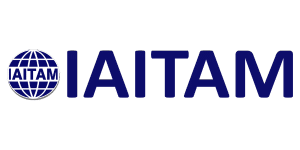Forum Replies Created
-
AuthorPosts
-
September 28, 2024 at 10:19 pm in reply to: Discuss whether communication or education is more important. #63790
John Olotu
ParticipantBoth are important
John Olotu
ParticipantAsset Tracking and Inventory Management
September 28, 2024 at 9:49 pm in reply to: What do you think is the most important policy for an ITAM program? #63788John Olotu
ParticipantAcquisition
September 28, 2024 at 9:47 pm in reply to: Policies must be enforced. What consequences will there be if they are not followed? #63787John Olotu
ParticipantNon-Compliance and Legal Risks
Software License Violations: Non-compliance with software licensing agreements can result in audits by vendors, which may lead to fines, legal action, and reputational damage. Over time, software vendors have become more aggressive in enforcing compliance.
Data Security and Privacy Violations: If policies governing the use and disposal of IT assets are not followed, sensitive data may be exposed or improperly handled, leading to data breaches and violations of regulations such as GDPR, HIPAA, or CCPA. This can result in fines, legal action, and loss of customer trust.
Environmental Regulations: Improper disposal of hardware assets (such as failing to recycle electronics) may result in violations of environmental laws, leading to regulatory fines and reputational damage.
September 28, 2024 at 9:45 pm in reply to: In what ways will your office culture affect how you communicate? #63786John Olotu
ParticipantPositive way
September 28, 2024 at 9:44 pm in reply to: What’s the first policy you’ll create and enforce in your ITAM program? #63785John Olotu
ParticipantAwareness and enforcement of the ITAM program
September 28, 2024 at 9:11 pm in reply to: Critique the roles and responsibilities, what other key stakeholder might be present in your organization? #63784John Olotu
ParticipantCFO
September 28, 2024 at 9:08 pm in reply to: Consider the executives you’ll have to convince. What negotiation skills will you have to use? #63783John Olotu
Participant– Understand executive priorities and concerns
– Build trust and demonstrate ITAM value
– Use data-driven evidence
– Negotiate collaboratively
– Address objections proactivelySeptember 28, 2024 at 9:03 pm in reply to: What roles and responsibilities do you have or anticipate you’ll have in your ITAM program? #63782John Olotu
ParticipantHardware Asset Manager
September 28, 2024 at 9:01 pm in reply to: Create and compare an “Is Map” vs. a “Should Map.” #63781John Olotu
ParticipantAn “Is Map” and a “Should Map” are useful tools for comparing the current state of a process or program (the “Is”) with the ideal or desired future state (the “Should”). In the context of IT Asset Management (ITAM), these maps provide a visual and conceptual way to identify gaps, inefficiencies, and areas for improvement.
September 28, 2024 at 8:54 pm in reply to: What non-verbals are you using right now as you read these discussion questions? #63780John Olotu
ParticipantVisual Cue
September 28, 2024 at 8:23 pm in reply to: Create a SWOT analysis of your current or anticipated ITAM program. #63779John Olotu
ParticipantStrengths:
1. Clear policies and procedures ensure compliance and alignment with organizational goals.
2. Effective communication and education promote stakeholder awareness.
3. Centralized asset management improves accountability and resource use.
4. Cost control through visibility into asset lifecycles.
5. Risk mitigation through proactive asset management.Weaknesses:
1. Resource constraints (staff, budget).
2. Incomplete data, especially for shadow IT.
3. Inconsistent adoption across departments.
4. Complex licensing management.
5. Technology integration issues.Opportunities:
1. Automation and AI for improved efficiency.
2. Cost savings through optimization.
3. Improved vendor relationships.
4. Cloud and virtualization management.
5. Sustainability initiatives.Threats:
1. Cybersecurity risks from unmanaged assets.
2. Non-compliance with regulations.
3. Rapid technological change rendering assets obsolete.
4. Shadow IT undermining the ITAM program.
5. Vendor lock-in limiting flexibility.September 28, 2024 at 8:17 pm in reply to: Describe a time when there was a miscommunication and explain how you handled it. #63778John Olotu
ParticipantNone
John Olotu
ParticipantHere’s a potential additional step to consider:
Feedback and Evaluation:
Gather feedback: Actively seek feedback from recipients to understand if the message was received, understood, and acted upon as intended.
Evaluate effectiveness: Assess the effectiveness of the communication channel and the clarity of the message.
Make adjustments: Based on the feedback, make necessary adjustments to improve future communications.
John Olotu
ParticipantActive listening: Pay attention to others.
Clear communication: Express ideas clearly.
Feedback: Give and receive feedback.
Relationships: Build strong connections.
Delegation: Empower your team. -
AuthorPosts
